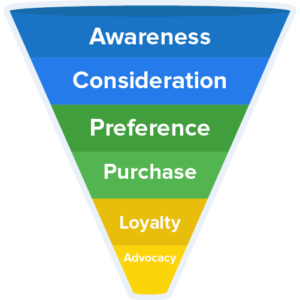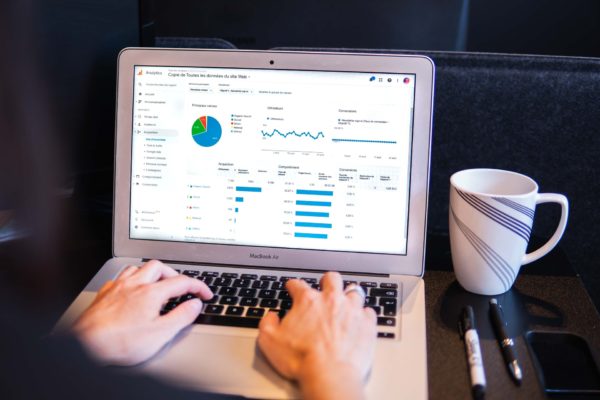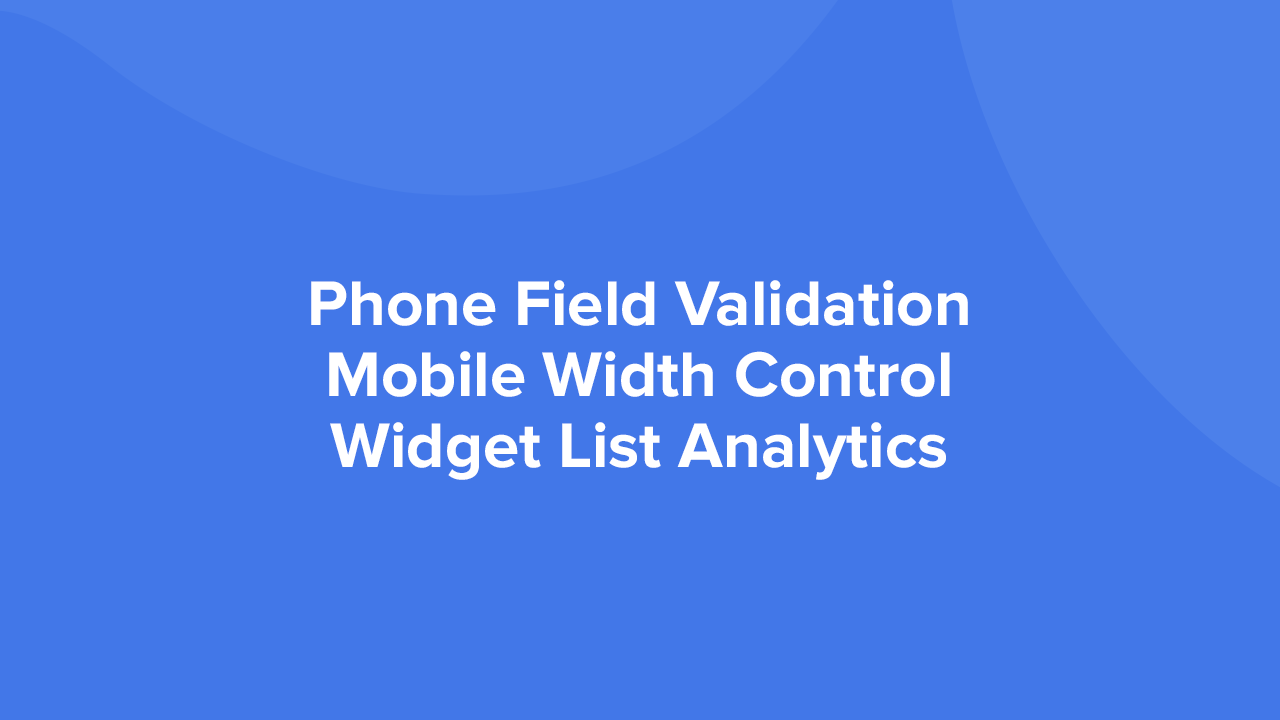For business owners and marketing teams, improving your website’s conversion rate is one of the main goals.
But what is a conversion? Well, conversions are any actions you want your users to take on your website. When someone performs a specific action, they’ve converted. It can range from signing up for your newsletter or buying your product or service.
In order to understand how to increase conversions, we need to know how users flow from visiting your website to taking the action you want them to take, to purchasing. The best way to know that is by using sales funnels.
What Is A Sales Funnel?
The sales funnel is a concept that’s been around for quite a while. Just like a funnel, it is wider at the top and narrow at the bottom. This shape shows that while at the top of the funnel there are many leads, only a few will convert and remain at the bottom of the funnel. There are typically six steps in a sales funnel: Awareness, Consideration, Preference, Purchase, Loyalty, and Advocacy. Ideally, you want your prospects to get to, at least, the purchase stage.
This is what a sales funnel typically looks like:

In a sales funnel, each stage can be associated with a different goal. Next up, we’re going to match these stages with their goals.
Awareness
In the awareness stage of the funnel, you want users to keep coming back to you. People only buy from you if they know you and trust you. This is why you need to establish yourself as an authority, someone trustworthy in your line of business.
In order to become an authority, you need to put your brand (and yourself) out there.
Consideration
To increase conversions at this stage, it’s important to get your prospects’ contacts, especially their email address. This tactic relies mostly on lead magnets, which are some offers you provide your users with in exchange for their email address.
There are many things you can use as lead magnets, and we’ll explore that subject later in this article.
Preference
In this stage, you need to start pre-qualifying your leads. Once you have your prospects’ attention, you need to make sure your product is right for them. At the same time, you should also ask yourself: does this person fit my customer profile? Both things are equally important in qualifying your leads and prospects.
You need to educate your prospects about your service or product. They will have some questions you should be able to answer, as you will have some questions for them.
Purchase
There are various sales techniques that can be used to close a deal, but we won’t go into that in this article. What you need to know is that on average, consumers need to be offered a deal seven times before they decide. Yes, that’s right: seven times.
With this in mind, you know you need to be persistent in order to get a sale, but you also cannot afford to be pushy as that can risk your sales and your reputation. So, we recommend keeping in touch with your prospects for as long as it seems necessary. This means you have to pay attention to patterns, making sure that you don’t give up on a lead too early nor too late.
Loyalty
When you have already convinced someone to buy from you, you should keep them attached to your business/brand for as long as possible. After all, it’s easier to get repeat customers than to go after new ones over and over again. It is essential to make sure you treat your customers right, as users are more likely to speak about a bad experience than to share when things go right.
Knowing this, you need to make sure that all touchpoints with your brand are positive. Every time a customer needs help, your team is there for them. If something goes awry, you fix it as soon as possible. It’s not easy to keep a good reputation among your customers, but it is possible to minimize the reasons why your customers might want to complain.
And once you get here, you just have to properly manage your brand/customer relationship in order to achieve advocacy. Nonetheless, how do you make sure your users convert? We’ll give you a few examples of tactics that will improve your conversion rate in the next section. There are many ways of making sure your users perform the action you want them to, so we’ll focus on the most typical ways to increase conversions.
13 Tips To Improve Your Conversion Rate
Blogging
This is our first tip for creating brand awareness: having a company blog in which you share updates and knowledge about your industry. This is an ideal way to develop your authority in the game: and you must not be secretive about how to get the best results. Sharing tips with your users, just like we’re doing on this article, is a great way to make sure your brand is well-known. Plus, if you’re offering something, it’s easier to get something in exchange (we’ll go through that in another section).
Social Networking
No matter what you sell, your customers most likely use social media. Users take to social media to ask questions, to get reviews of a product, to get a public opinion on something… So you have to be in the networks that your customers use the most. If you’re a B2B (business to business) company, probably your users are on LinkedIn. If you do B2C (business to customer), this will depend on your target audience’s interests as well.
The main goal of social media marketing is not just brand awareness anymore. Social networking can help you sell your products, and get in touch with prospects and customers. We recommend planning out your social networking activity in order to find out where your customers are, and how to best reach them.
PPC Campaigns
Pay-per-click advertising allows you to promote your company on other websites, or directly in Google’s SERPs (search engine results pages). There are many platforms on which to advertise, and the right type of campaign will depend on your goals.
Usually, your PPC campaigns will take users to a landing page, in which you have a CTA (call to action) that matches the action you want them to take. An example of an action is to fill in their email address and name so you can add them to your mailing list.
You can target these users by sending them to specific landing pages according to the keywords used. These landing pages will not be accessible through the website’s navigation, as their goal is only to convert users that come from PPC campaigns.
Calls To Action
We mentioned calls to action before, but we didn’t go into detail about them. As a starting point, a call to action is a message that is directly associated with the action you want users to take. Let’s say for example you want users to sign up for your mailing list. A typical CTA would be “Join Now” or “I want to know more”…
Calls to action also refer to the kind of lead magnet you’re using. To get users to join your mailing list, maybe you could offer an ebook, a white paper, or anything that is of value and interest to your leads (and at the same time does not cost you a lot).
The CTA will usually be placed on a button. The button confirms the action you want users to take. Call to action buttons are something that you cannot afford to leave out in any campaign or landing page.
Forms
Forms are commonly used to get contact information, but you can use them for other goals, such as collecting survey answers. There are several ways in which you can use forms, too: for example, if you have an ebook to offer as a lead magnet, users just need to fill out the form and click the CTA button to receive the ebook.
When it comes to creating a form to collect contact information, you can just ask for a name and email address, or you can use this form as a way to collect more details about this prospect. What is their line of work? What is their role? How large is the company they work for? You can ask anything that is relevant to pre-qualify this lead.
How many questions you ask on your form is entirely up to you. Some products require more details about leads than others. For B2B products, users will not find it weird that you’re asking about their job, whereas for B2C products or services these types of questions will be too much.
Email Marketing
Once you collect email addresses from your prospects on your website, whether it’s from pop ups, embedded forms, or any other strategy, you have to put that information to good use.
We recommend setting up drip campaigns to begin with, so your prospects can get to know your brand over time, with zero pressure. It’s not fun to be hassled, so bear in mind to be moderate when creating your email sequence. Give it at least a few days between each email, and don’t push your product too much.
If you’re offering value to your prospects with your emails, it’s likely that the users will feel more comfortable making a purchase. As we mentioned previously, it takes a while for prospects to convert. Be patient; it will be worth the wait.
Sales Integration And CRM
If you don’t use a CRM yet, we recommend you try Platformly. CRM (customer relationship management) software helps you connect with prospects and customers, and manages all the interactions between them and your brand. Sales integration provides companies with a way to understand their sales flow, which helps define a sales strategy to improve conversion rates.
CRM tools and sales integration also help you determine which phase of your sales funnel each of your leads is currently in, which will help you to target users with different messages that match their stage in the sales cycle. You can also use other techniques together with your CRM, such as retargeting PPC campaigns and other automation options.
Promote Your eCommerce
Just because people are visiting your website, it does not mean that they are going to buy from you. So, you’ve got to make it easy to purchase or subscribe, and it has to be obvious how users can carry out these actions.
We recommend using testimonials to encourage potential customers, together with live chat on your website to clear any doubts your prospects might have about your product. At the same time, live chat can propose different deals to different users, customizing the user experience.
Email your offers to your mailing list. Even though they might not buy immediately, your recipients will start thinking about it. Main takeaway is: users don’t buy if they don’t know your offers. What you sell and how to use it must be clear.
Targeted Content
A way to increase your conversion rate is to use targeted content. This relates to transactional emails: we recommend setting up campaigns every now and then and sending them through email.
These emails should be segmented: let’s say you have users in both hemispheres and you want to send a summer campaign. You need to segment your users in order to send this campaign only when it makes sense.
At the same time, abandoned cart emails cannot be missing from your strategy. If a user on your website leaves their products behind without purchasing, it’s essential to email them a bit later with maybe a coupon code, or a special offer. This will make the decision easier for your users.
Another example of targeted content is to send offers to users that bought from you in the past, but haven’t purchased anything in a while. Also, use upselling and cross selling emails too – if your user bought something already, they might be interested in other related products.
Social Monitoring
In order to know where your customers are, social monitoring is quite relevant. Many people take it to social media to complain about a product or service, to ask around for recommendations… You have to be there to answer those users, making sure that nothing falls through the cracks.
If you meet your customers where they are already, it’s easier to develop relationships. After all, that’s all marketing is about: joining people and brands together for a common purpose, and keeping users happy and satisfied with your brand and product.
There are dozens of different tools you can use for tracking mentions about your brand, so it’s up to you which one to pick.
It’s also relevant to be aware of how your competition is doing. Brand monitoring can help you with that as well: find opportunities where your competitors have failed.
Referrals
It’s a common technique to ask for referrals from your current users. Many companies have a referral system in which you get a discount if you send customers their way.
The best thing about this tactic is that you’re taking advantage of the oldest means of advertising – word of mouth. Only customers that love your product are going to send their friends, family, and colleagues your way.
Word of mouth might be old school, but it remains extremely powerful. Plus, it doesn’t take much to get it: you can offer a discount, as we mentioned, or even some offer for both your new customer and the person who sent the referral.
Reminders
Does your product need maintenance? Is there a special upgrade that your users might have missed? Then it’s alright to email them. Reminder emails are not only a great way to make sure users come back to you, they can also be used for upselling and cross-selling.
If you don’t do reminder emails yet, it’s a great time to implement it. You can use Platformly to schedule these emails so everything is automated.
Automations save you time and money, so we definitely recommend automating as much as possible.
Thank You Messages
It’s always polite to say thank you and show gratitude to your customers. Showing appreciation for your customers choosing your company is not only polite, but it can also increase your conversion rate.
We recommend setting up thank you messages after orders, on special occasions such as your customer’s birthday, and so on. Christmas is also a great time to say thanks, as gratitude is one of the main themes of the season.
Wrapping Up
Knowing how users move across your sales cycle is essential in order to increase the number of users on your website that make a purchase.
For some businesses, the goal might be a subscription, for others, just joining a mailing list. It’s all about how your business works and what your goals are or it.
Nevertheless, the strategies to increase conversion rate are going to be similar for most businesses.
Convertful allows you to grow your mailing list easily, by offering many lead capture options that will make your business grow. When it comes to improving your conversion rate, getting a tool like Convertful will work wonders.
We’ve shown you the most effective ones in this article, and we hope you’ve enjoyed the ride. You can find Convertful on Facebook, Twitter, and LinkedIn, too.

 Collecting Email Addresses on Your Website – The Guide
Collecting Email Addresses on Your Website – The Guide Convertful Update #36
Convertful Update #36